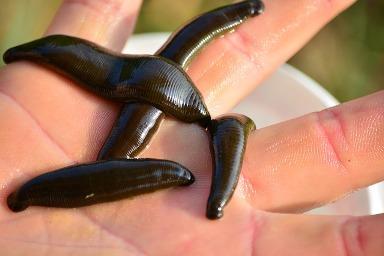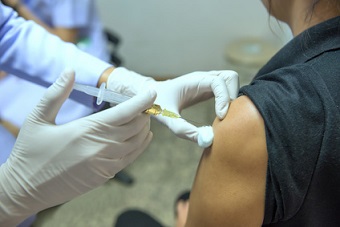The Benefits of Leech Therapy in Wound Care
August 4, 2015
I have written about biotherapy in the past, primarily about maggot therapy, but today I would like to discuss leech therapy. In the U.S., leeches are used frequently by plastic surgeons to save a surgical flap that is in danger of dying. Leeches in the U.S. are provided by Leeches USA and they keep leeches ready at the New York airport to ship out in an emergency 24/7. The leeches used actually come from France and are FDA approved. Monarch Labs in the U.S. is working to develop a U.S. leech, but has a ways to go to get FDA approval.
Use of Leech Therapy in the Treatment of Peripheral Arterial Disease
In my practice, I use leeches frequently for a variety of reasons, one of the most interesting being to improve circulation in the legs. I treat patients with severe peripheral arterial disease who cannot be improved with revascularization. In the four or five patients treated to date, all have been successful, with improvement in arterial blood flow. We use a laser Doppler to measure arterial flow.
Using leech therapy is simple. The legs are washed and rinsed with normal saline. The patient is given a Bactrim for prophylaxis. One to four leeches are attached to each leg—this actually is the hardest part since the leeches are not in the water, so they are out of their environment. We usually have to prick the skin to draw blood, then apply the leech. We give the leeches up to two hours to complete their blood draw and if not done by then, I apply an alcohol pad to the nose of the leech, causing it to immediately drop off.
Once the leeches are done, we like to see the post-bite bleed, which, according to our Russian friends, is the most important part. We then clean the bites and wrap the legs in gauze. The patient knows the bleeding will continue for 24 hours and the gauze may need to be replaced. Since each leech draws 20-30ml of blood, we are careful not to use too many leeches and cause too much blood loss. In hospital cases where leeches are being used daily, sometimes a blood transfusion is needed.
Other Medical Applications for Leeches
It is interesting that a leg with peripheral arterial disease is like a horse’s leg with laminitis. We all remember Barbero, the great American racehorse that developed laminitis and died. In Israel, laminitis is treated with leech therapy with astounding success. Watching a video of a lame horse treated with leeches, then months later being able to eagerly trot in the field, makes one a believer in this treatment.
Patients have been very favorably impressed with the leeches and eagerly ask for further treatments. In other parts of the world, one usually tries to be treated yearly with leeches to improve health. More information will be taught and shared at the 9th International Biotherapy Conference being held this October in Malaysia, in conjunction with a major wound conference.
About The Author
Aletha Tippett MD is a family medicine and wound care expert, founder and president of the Hope of Healing Foundation®, family physician, and international speaker on wound care.
The views and opinions expressed in this content are solely those of the contributor, and do not represent the views of WoundSource, HMP Global, its affiliates, or subsidiary companies.










